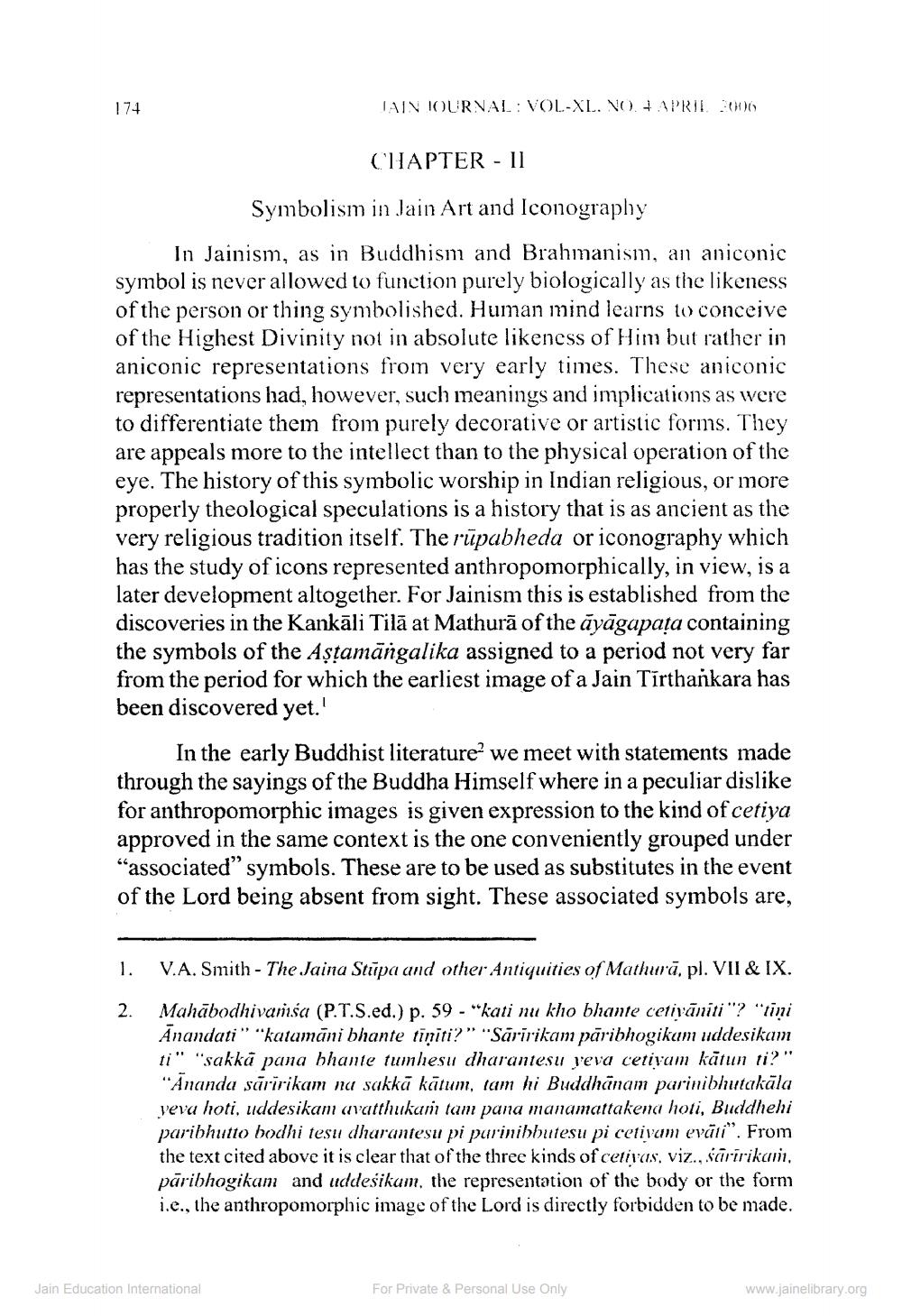Book Title: Jain Journal 2006 04 Author(s): Jain Bhawan Publication Publisher: Jain Bhawan Publication View full book textPage 9
________________ 174 TAIN JOURNAL: VOL-XL. NO. HAPRIL 2006 CHAPTER - 11 Symbolism in Jain Art and Iconography In Jainism, as in Buddhism and Brahmanism, an aniconic symbol is never allowed to function purely biologically as the likeness of the person or thing symbolished. Human mind learns to conceive of the Highest Divinity not in absolute likeness of Him but rather in aniconic representations from very early times. These aniconic representations had, however, such meanings and implications as were to differentiate them from purely decorative or artistic forms. They are appeals more to the intellect than to the physical operation of the eye. The history of this symbolic worship in Indian religious, or more properly theological speculations is a history that is as ancient as the very religious tradition itself. The rūpabheda or iconography which has the study of icons represented anthropomorphically, in view, is a later development altogether. For Jainism this is established from the discoveries in the Kankāli Tilā at Mathurā of the āyāgapața containing the symbols of the Astamāngalika assigned to a period not very far from the period for which the earliest image of a Jain Tīrthankara has been discovered yet.' In the early Buddhist literature we meet with statements made through the sayings of the Buddha Himself where in a peculiar dislike for anthropomorphic images is given expression to the kind of cetiya approved in the same context is the one conveniently grouped under "associated” symbols. These are to be used as substitutes in the event of the Lord being absent from sight. These associated symbols are, 1. V.A. Smith - The Jaina Stupa and other Antiquities of Mathurā, pl. VII & IX. 2. Mahābodhivarisa (P.T.S.ed.) p. 59 - "kati nu kho bhante cetivanti"? "tini Anandati" "katamāni bhante tiniti?” “Sārīrikam pāribhogikam uddesikam ti" "sakkā pana bhane tumhesu dharantesu veva cetivam kātun ti?" "Ananda saririkam na sakkā kātum, tam hi Buddhānam parinibhutakāla veva hoti, uddesikam avatthukar tam pana manamattakena hoti, Buddhehi paribhutto bodhi tesu dharantesu pi purinibbutesu pi cetivam evāli". From the text cited above it is clear that of the three kinds of cetivas, viz., sūririkan, pāribhogikam and addesikam, the representation of the body or the form i.e., the anthropomorphic image of the Lord is directly forbidden to be made. Jain Education International For Private & Personal Use Only www.jainelibrary.orgPage Navigation
1 ... 7 8 9 10 11 12 13 14 15 16 17 18 19 20 21 22 23 24 25 26 27 28 29 30 31 32 33 34 35 36 37 38 39 40 41 42
